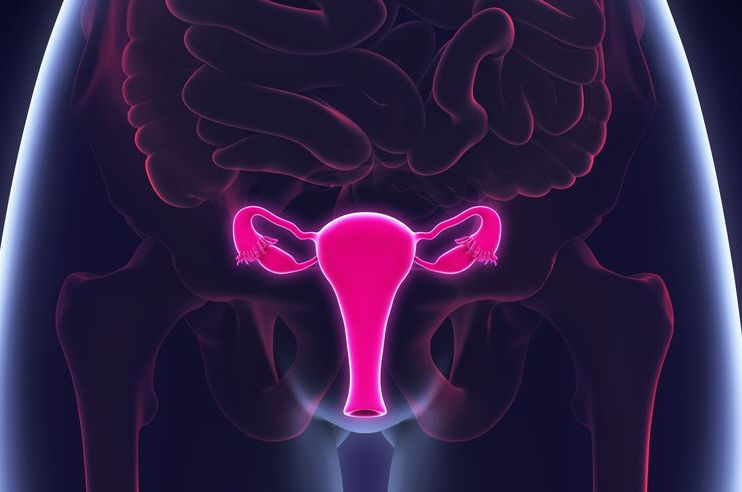Caesarean Section
Cesarean delivery (C-section) is a surgical procedure used to deliver a baby through incisions in the abdomen and uterus. A C-section might be planned ahead of time if you develop pregnancy complications or you’ve had a previous C-section and aren’t considering a vaginal birth after cesarean.
A cesarean delivery — also known as a C-section or cesarean section — is the surgical delivery of a baby. It involves one incision in the mother’s abdomen and another in the uterus.
It’s a common procedure that’s used to deliver nearly one-third of babies in the United States, according to the Centers for Disease Control and PreventionTrusted Source.
Cesarean deliveries are generally avoided before 39 weeks of pregnancy so the child has proper time to develop in the womb. Sometimes, however, complications arise and a cesarean delivery must be performed prior to 39 weeks.
Why a cesarean delivery is done
A cesarean delivery is typically performed when complications from pregnancy make traditional vaginal birth difficult, or put the mother or child at risk. Sometimes cesarean deliveries are planned early in the pregnancy, but they’re most often performed when complications arise during labor.
Reasons for a cesarean delivery include:
baby has developmental conditions
baby’s head is too big for the birth canal
the baby is coming out feet first (breech birth)
early pregnancy complications
mother’s health problems, such as high blood pressure or unstable heart disease
mother has active genital herpes that could be transmitted to the baby
previous cesarean delivery
problems with the placenta, such as placental abruption or placenta previa
problems with the umbilical cord
reduced oxygen supply to the baby
stalled labor
the baby is coming out shoulder first (transverse labor)
The risks of a cesarean delivery
A cesarean delivery is becoming a more common delivery type worldwide Trusted Source, but it’s still a major surgery that carries risks for both mother and child. Vaginal birth remains the preferred method for the lowest risk of complications. The risks of a cesarean delivery include:
bleeding
blood clots
breathing problems for the child, especially if done before 39 weeks of pregnancy
increased risks for future pregnancies
infection
injury to the child during surgery
longer recovery time compared with vaginal birth
surgical injury to other organs
adhesions, hernia, and other complications of abdominal surgery
You and your doctor will discuss your birthing options before your due date. Your doctor will also be able to determine if you or your baby are showing any signs of complications that would require a cesarean delivery.
How to prepare for a cesarean delivery
If you and your doctor decide that a cesarean delivery is the best option for delivery, your doctor will give you complete instructions about what you can do to lower your risk of complications and have a successful cesarean delivery.
As with any pregnancy, prenatal appointments will involve many checkups. This will include blood tests and other examinations to determine your health for the possibility of a cesarean delivery.
Your doctor will make sure to record your blood type in case you need a blood transfusion during the surgery. Blood transfusions are rarely needed during a cesarean delivery, but your doctor will be prepared for any complications.
Even if you aren’t planning to have a cesarean delivery, you should always prepare for the unexpected. At prenatal appointments with your doctor, discuss your risk factors for a cesarean delivery and what you can do to lower them.
Make sure all of your questions are answered, and that you understand what could happen if you need to have an emergency cesarean delivery before your due date. Because a cesarean delivery takes additional time to recover from than normal birth, arranging to have an extra set of hands around the house will be helpful. Not only will you be recovering from surgery, but your new baby will need some attention as well.
How a cesarean delivery is performed
Plan to stay in the hospital for three to four days while you recover from your surgery.
Before the surgery, your abdomen will be cleaned and you’ll be prepared for receiving intravenous (IV) fluids into your arm. This allows doctors to administer fluids and any type of medications you may need. You will also have a catheter put in to keep your bladder empty during the surgery.
There are three types of anesthesia offered to delivering mothers:
spinal block: anesthesia that’s injected directly into the sac that surrounds your spinal cord, thus numbing the lower part of your body
epidural: a common anesthesia for both vaginal and cesarean deliveries, which is injected into your lower back outside the sac of the spinal cord
general anesthesia: anesthesia that puts you into a painless sleep, and is usually reserved for emergency situations
When you have been properly medicated and numbed, your doctor will make an incision just above the pubic hairline. This is typically horizontal across the pelvis. In emergency situations, the incision may be vertical.
Once the incision into your abdomen has been made and the uterus is exposed, your doctor will make an incision into the uterus. This area will be covered during the procedure so you won’t be able to see the procedure.
Your new baby will be removed from your uterus after the second incision is made. Your doctor will first tend to your baby by clearing their nose and mouth of fluids and clamping and cutting the umbilical cord. Your baby will then be given to hospital staff and they will make sure your baby is breathing normally and prepare your baby to be put into your arms.
If you’re sure you do not want any more children, and have signed the consent, the doctor can tie your tubes (a tubal ligation) at the same time. Your doctor will repair your uterus with dissolving stitches and close your abdominal incision with sutures.
Following up after a cesarean delivery
After your cesarean delivery, you and your newborn will stay in the hospital for about three days. Immediately after surgery, you will remain on an IV. This allows for adjusted levels of painkillers to be delivered into your bloodstream while the anesthesia wears off.
Your doctor will encourage you to get up and walk around. This can help prevent blood clots and constipation. A nurse or doctor can teach you how to position your child for breastfeeding so there’s no additional pain from the cesarean delivery incision area.
Your doctor will give you recommendations for home care after the surgery, but you should generally expect to:
take it easy and rest, especially for the first few weeks
use correct posture to support your abdomen
drink plenty of fluids to replace those lost during your cesarean delivery
avoid sex for four to six weeks
take pain medications as needed
seek help if you experience symptoms of postpartum depression, such as severe mood swings or overwhelming fatigue
Call your doctor if you experience the following symptoms:
breast pain accompanied with a fever
foul-smelling vaginal discharge or bleeding with large clots
pain when urinating
signs of infection — for example, fever over 100 °F, redness, swelling, or discharge from the incision

Lorem ipsum dolor sit amet, consectetur adipiscing elit. Phasellus ac aliquam velit. Phasellus dapibus cursus erat, quis consequat urna efficitur non. Phasellus cursus, erat quis mollis lobortis, urna risus hendrerit metus, id dictum metus purus vel magna. Nulla non purus sit amet arcu convallis egestas
Lorem ipsum dolor sit amet, consectetur adipiscing elit. Phasellus ac aliquam velit. Phasellus dapibus cursus erat, quis consequat urna efficitur non. Phasellus cursus, erat quis mollis lobortis, urna risus hendrerit metus, id dictum metus purus vel magna. Nulla non purus sit amet arcu convallis egestas
Lorem ipsum dolor sit amet, consectetur adipiscing elit. Phasellus ac aliquam velit. Phasellus dapibus cursus erat, quis consequat urna efficitur non. Phasellus cursus, erat quis mollis lobortis, urna risus hendrerit metus, id dictum metus purus vel magna. Nulla non purus sit amet arcu convallis egestas

COSMETIC SURGERY
Lorem ipsum dolor sit amet, consectetur adipiscing elit. Ut elit tellus, luctus nec ullamcorper mattis, pulvinar dapibus leo.

COSMETIC SURGERY
Lorem ipsum dolor sit amet, consectetur adipiscing elit. Ut elit tellus, luctus nec ullamcorper mattis, pulvinar dapibus leo.

COSMETIC SURGERY
Lorem ipsum dolor sit amet, consectetur adipiscing elit. Ut elit tellus, luctus nec ullamcorper mattis, pulvinar dapibus leo.
